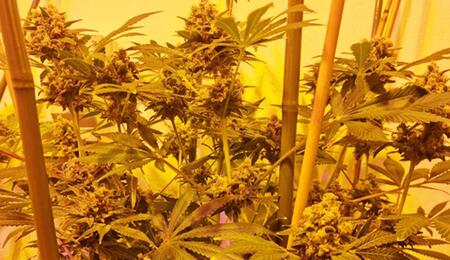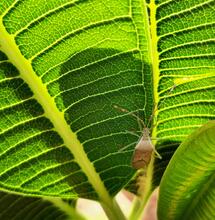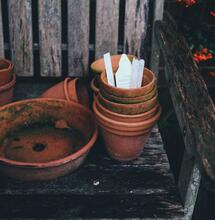Flowering Cannabis Plants Indoors

All You Need to Know... The flowering stage is normally the most anticipated and exciting part for a new grower. Making sure that you do everything correctly will be the difference between growing a superb crop, or something that is basic quality but lacks the terps and desired effect. Below you will learn about all the things to check during 12/12 as well as my 5 top tips, to help keep those jars filled with high-grade.
Air Flow
I always like to start with airflow as it is commonly overlooked and can be the reason many crops become infected with pathogens, or produce small yields. When replicating the great outdoor within a tent or converted room, attic or cellar, you should be focused on providing environmental conditions that create a supply of fresh air from outside, with extra air flow created from multiple oscillating fans turning at different times to each other.
It is important to keep the flow or air not only consistent 24/7, you should allow fans to blow air around the base, centre and tops of your canopy. In cases where plants are grown in a Sea of Green or SCROG, a lack of fresh air can not only encourage moisture levels to increase, but will also invite unwanted pests.
Temperature Checks
Now you have your air flow working well and there is a cool fresh breeze circulating the outside air around the room, you will want to make sure that your temperature stays as consistent as possible, so this means during the daytime when the lights are on you will aim for 24 degrees Celsius and when the lights are off you will want to maintain the temperature to 17-18 degrees Celsius.
Consistency is key when growing Cannabis indoors and especially when talking about temperature fluctuations. A good tip is to use a hygrometer which can be hung inside the tent with a small sensor, that will give you a digital reading of the temperature over a 24-hour period. This allows you to see what the difference between daytime and night-time will be, and if you need to take action add heat or cool the room down.
Humidity Levels
As you will be transitioning for the vegetative stage that requires higher humidity levels close to 70%, you will now need to gradually change the humidity down to 50% and during the flowering stage when buds are appearing, then the reduction down to 30-40%. The drier the environment when flowering the more resinous, dense and terpene rich the buds will be in my opinion.
[caption id="attachment_41346" align="alignnone" width="1920"] A perfect example of a plant very close to the harvest window.[/caption]
The drop from 70% to 35% should occur over weeks 1-5 of flowers, and the most important is to keep the humidity levels below 40% when there is hard to squeeze nugs. The reason 40% is such a significant number is because this is where pathogens such as powdery mildew and Botrytis will enter your grow room. A hygrometer as mentioned above is designed to display humidity levels so when checking the day and night time temperatures, make sure your relative humidity is well within the comfort zone.
Pot Size
In my opinion there is no need to grow with pots that exceed 14 inches in height, when flowering Cannabis indoors. During the vegetative stage, plants will focus on establishing a prolific root zone that will supply all the food and water back to the plant during the different life cycle. Once plants are triggered to flower under 12/12, then they will cease root growth and focus mainly on flower production.
If you do plan to repot into a bigger container that has an organic mix designed for the blooming period, or just want to upgrade to a 10-litre pot for example then do this during the first week of 12/12. Repotting is beneficial and will encourage the plants to grow bigger, but doing this too late can have negative effects and in some cases shock the plants when they need to be using all their energy on transitioning to flower.
Nutrients and Feeding Frequency
Most of the questions that I am sent from growers suffering with issues during flowering, often come down to nutrients and feeding frequency. Nutrient manufacturers will provide a feeding chart that is usually designed as an infographic and will show millilitre to litre ratio you should follow. As long as you do follow the recommended feed if it is organic or hydroponics, the most important thing is keeping a healthy balance of wet to dry with your growing medium.
Underwatering is not the end of the world and your Cannabis plants will bounce back with vitality and vigour. Over watering however can cause plenty of problems further down the line from nutrient deficiency, toxicity, oversaturating the root zone and encouraging bad bacteria. The best way to check if your plants need to be watered with nutrient solution or water, is to see how dry the pot has become and when the medium is mostly dry and full of air pockets, now is the best time to water until there is a slow amount of runoff. This ensures that air displacement has occurred when the water falls through the pot keeping your root zone oxygen rich and promoting the good fungi and bacteria groups.
Flowering at Night
You would be surprised how many people have never considered flowering their rooms or tent at night time. The only downside is you may not get to visit your garden and enjoy spending time there during the late and early hours of each day, however there are many benefits associated. The rate of electricity is normally a lower tariff during the evening times and the temperature outside will be much cooler than daytime.
[caption id="attachment_41345" align="alignnone" width="1920"] Flushing will push the plants to use all their internal foods.[/caption]
Flowering your Cannabis plants at night means that during the hotter months of the year, you can focus on maintaining a consistent light off day time temperature, and when the lights kick in from say 10pm until 10am for example, you will not have to battle the challenging heat waves or Summer time.
What About CO2?
Supplementing your plants with Carbon Dioxide will have many benefits and the main being yield. There are some factors that need to be considered if you are new to growing Cannabis indoors and plan to use CO2. The first thing to consider is that the uptake of CO2 is far greater when plants indoors are exposed to temperatures above 25 degrees Celsius ranging up to 30 degrees Celsius. The second is that the stomata responsible for absorption of CO2 from the air open 60 mins after the lights come on.
Outdoor CO2 levels are around 400 parts per million, but Cannabis plants are able to uptake levels of 800-1200ppm comfortably. As covered in the part about temperature and humidity, raising your daytime temperature past 24 degrees can affect how the plants transpire and how receptive you may become to harmful airborne pathogens, so be extra careful and vigilant during the final 4 weeks of flowering and inspect your buds inside and out for mould.
Odour Control
Keeping your indoor garden as stealth and secure as possible is essential, so odour control should be at the top of your list. Carbon filters are designed to mask any bad smells and blow carbon cleaned air out of the room or tent. Over time carbon filters can lose the power to keep a flowering room odour free, and factors such as high temperatures can have an effect.
It is a good idea to change your carbon filter to either a well-made one that has a good reputation within the industry, or replace your basic cheaper ones every 3 years. It is better for you to have an awareness about odour than finding out from a disgruntled neighbour or worst yet the authorities.
Flushing Your Plants
Flushing is my favourite part of the flowering cycle, as not only does it mean no more nutrients for that final 2 weeks, it also encourages the plants to use their internal reserves and in return will produce an array of hypnotic, head turning colours. This magical colour show happens as the plants make the final push and is a sign that you will have some very clean tasting flowers and your plants have been encouraged to mature to their fullest.
You will only need to use plain water when flushing and by doing so, any undissolved salts that have accumulated over the flowering period, will have a chance to wash away. Another way of ensuring your final crop will have a smooth, flavoursome taste and smell incredible. Do not think that you need to over water the plants and flood them with buckets of water. Doing this is the exact same as overwatering and will cause issues during the final few weeks. Keep to the exact same watering frequency and follow the rule of feeding when the medium is mainly dry and stop when you get a small run off from the bottom of the pots.
My 3 Top Tips for Flowering Cannabis Indoors
Tip #1: To help keep your humidity levels consistent during the day and night times, using a dehumidifier is an excellent way to remove excessive moisture from the air. These are a lifesaver during the hottest and most challenging Summer months.
Tip #2: Using enzymes when flushing your Cannabis plants can speed up the breakdown of substrates and organic matter. Adding 10ml per litre of enzyme to your water will allow for more advanced taste and ash quality in my opinion.
Tip #3: Always use a hygrometer to get a true reading of your grow room for both day and night time. Never second guess the humidity levels and find out the hard way later in the flower. They are not expensive and will allow you to grow more professionally.
Please check out my YouTube podcast and website for more great info and advice about all things Cannabis. Keep growing and stay humble!



.png)